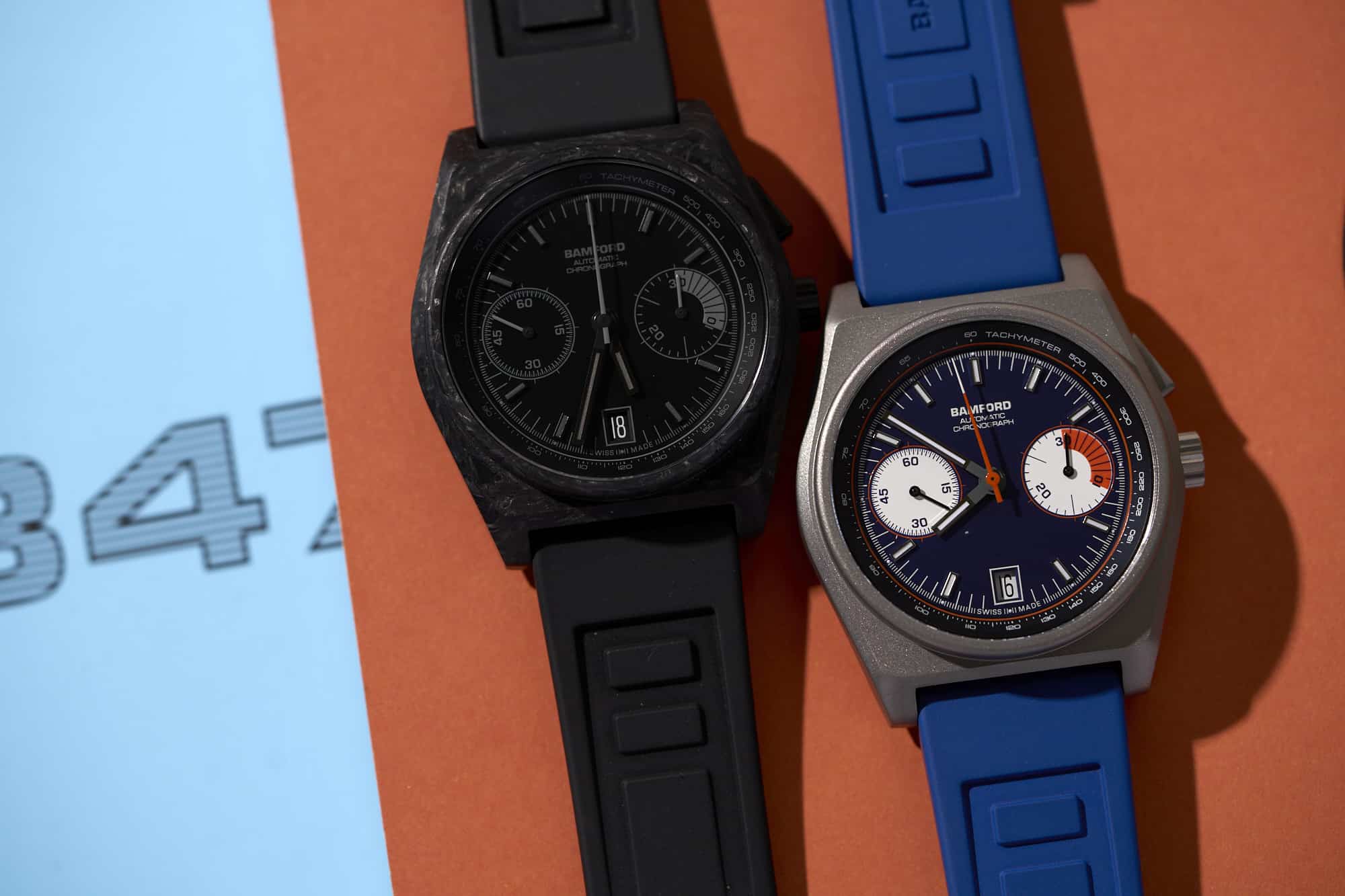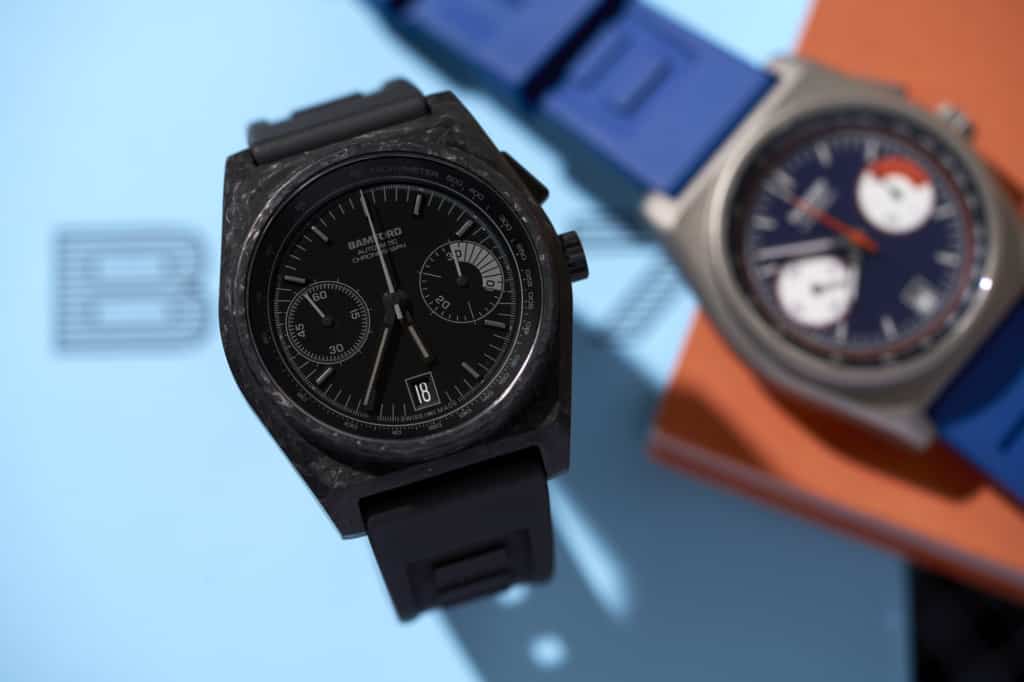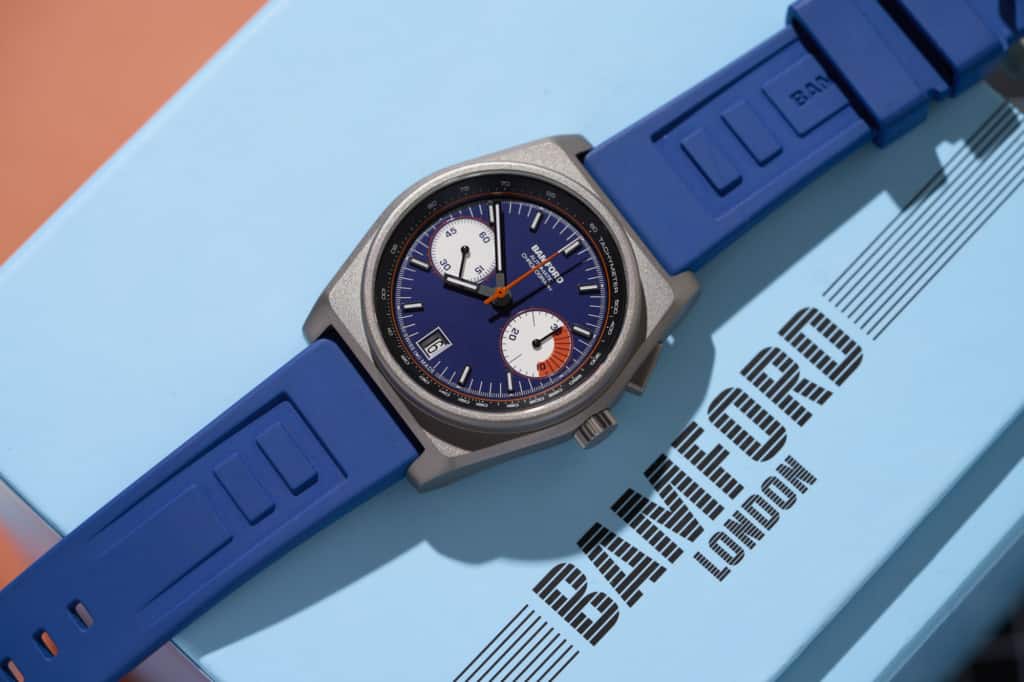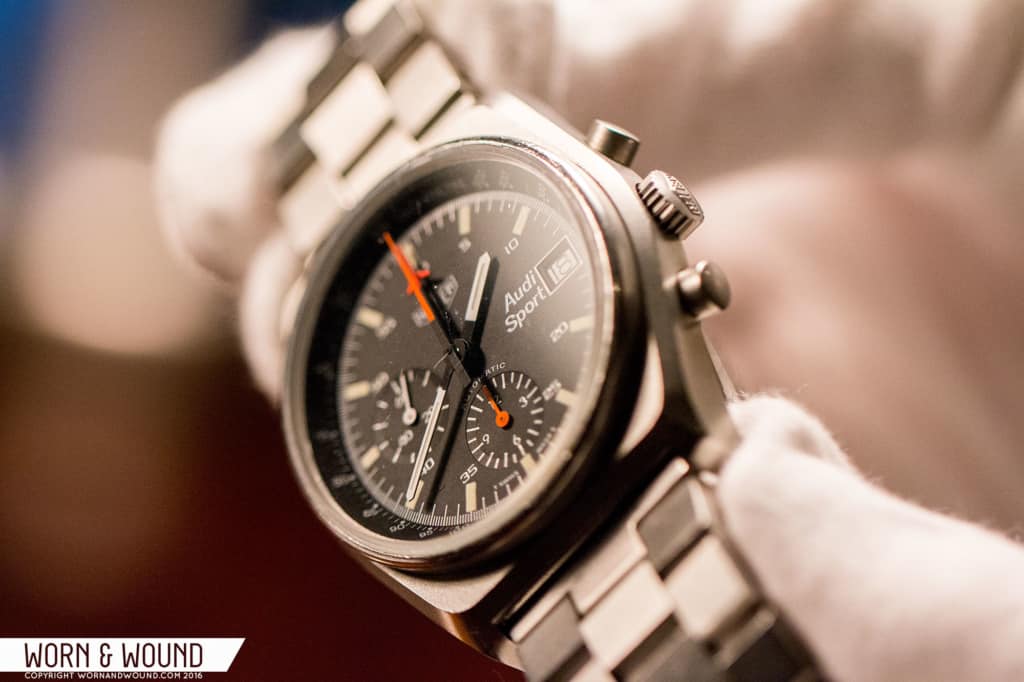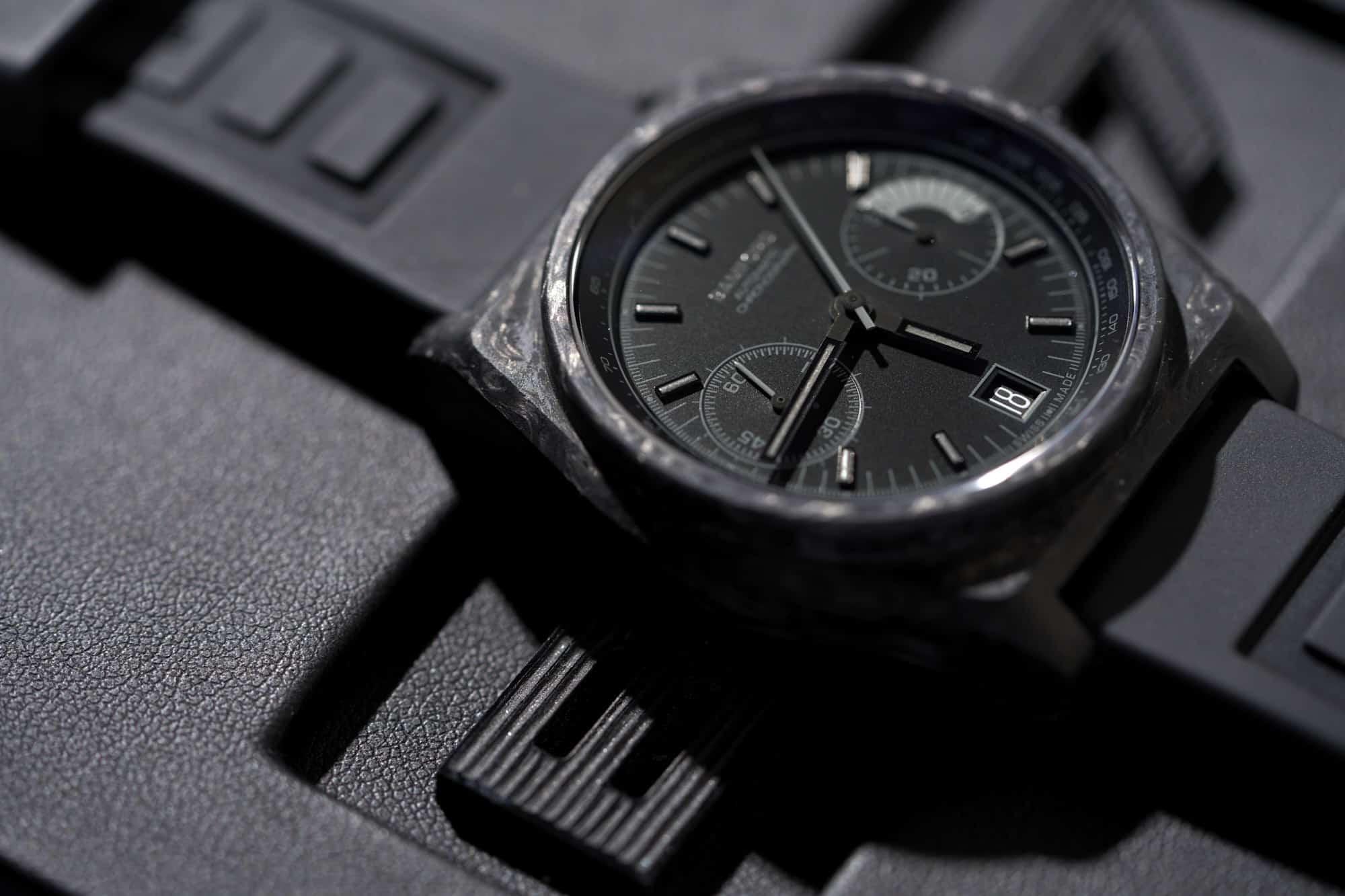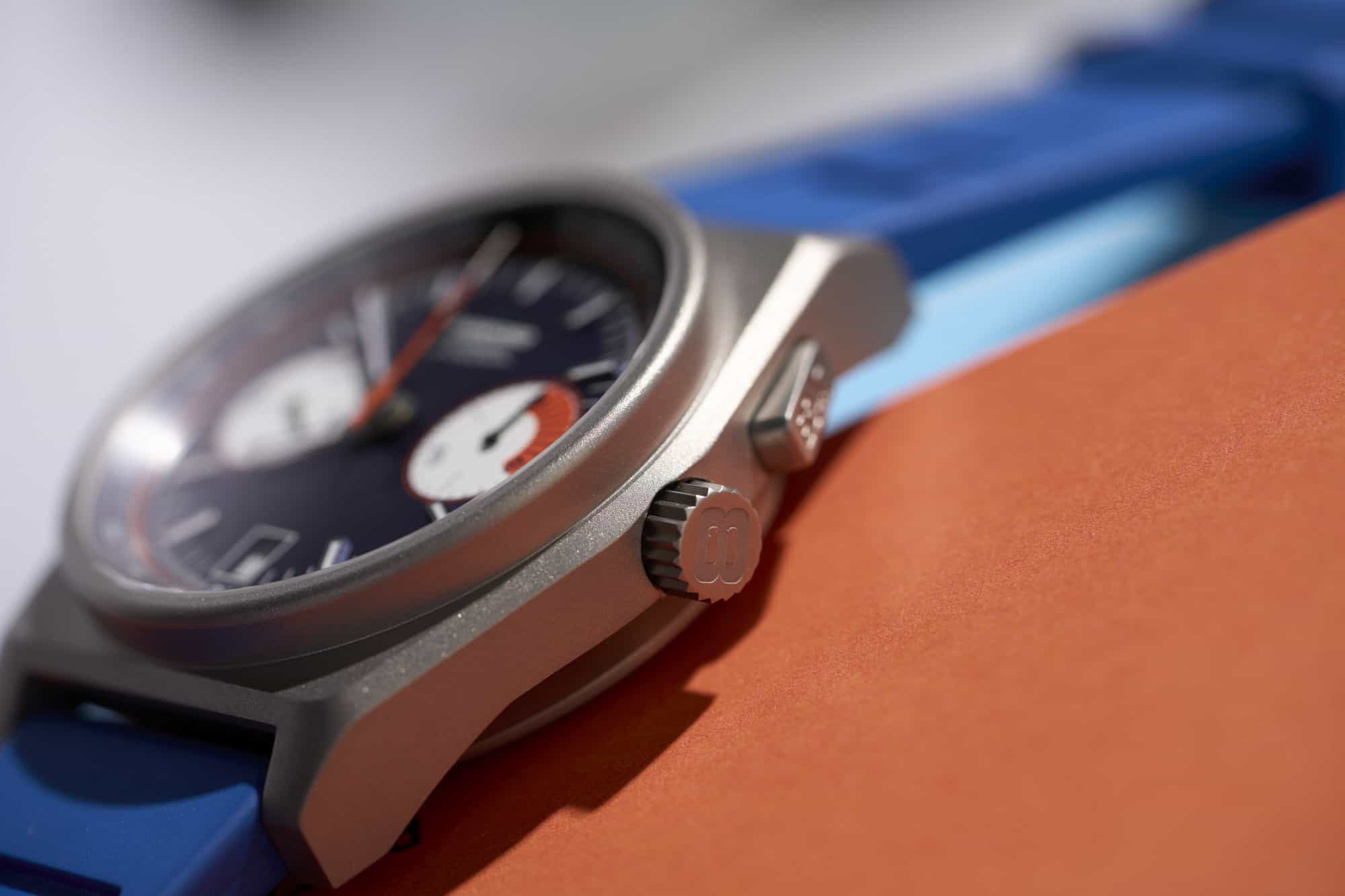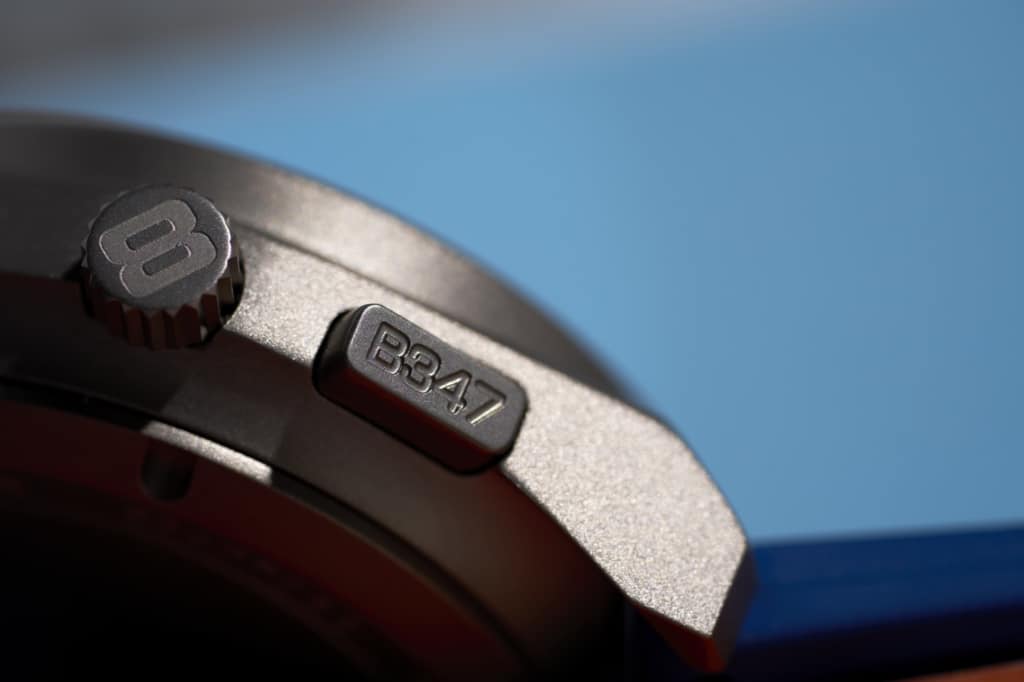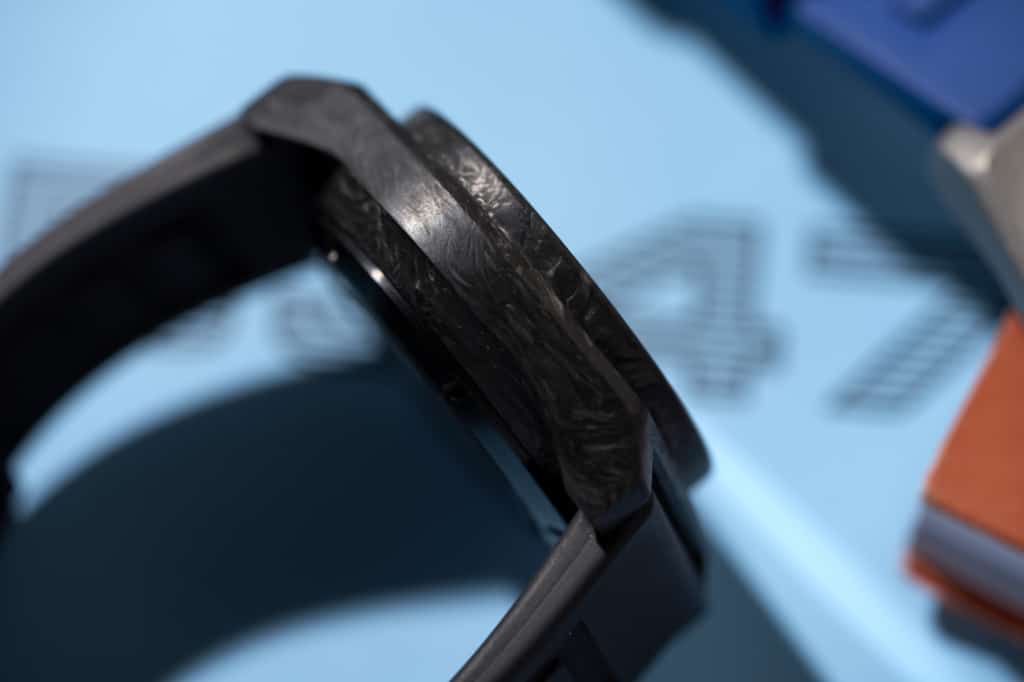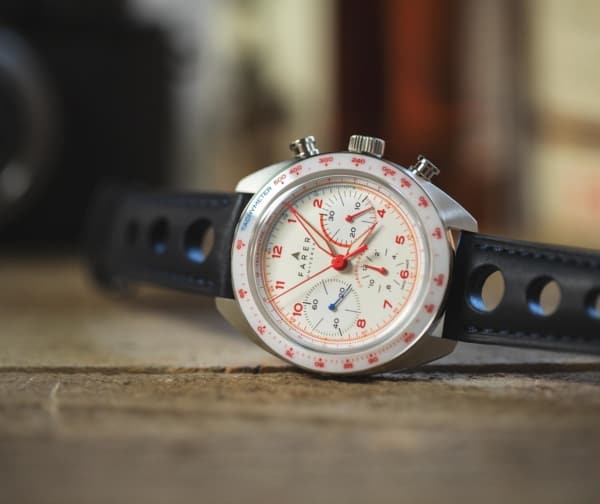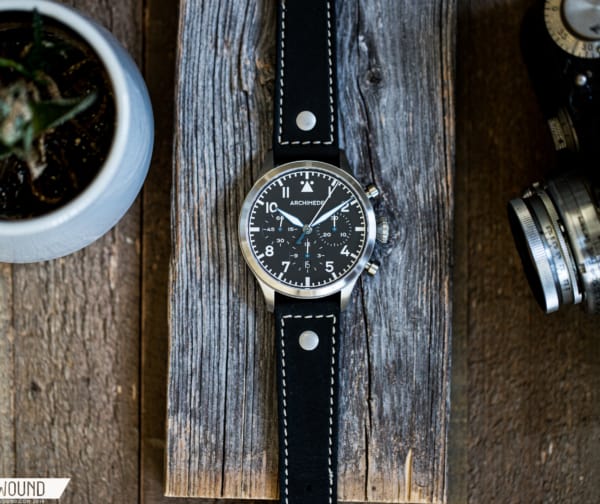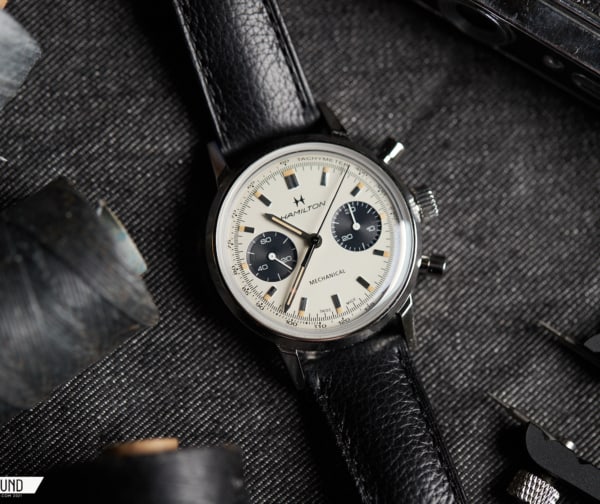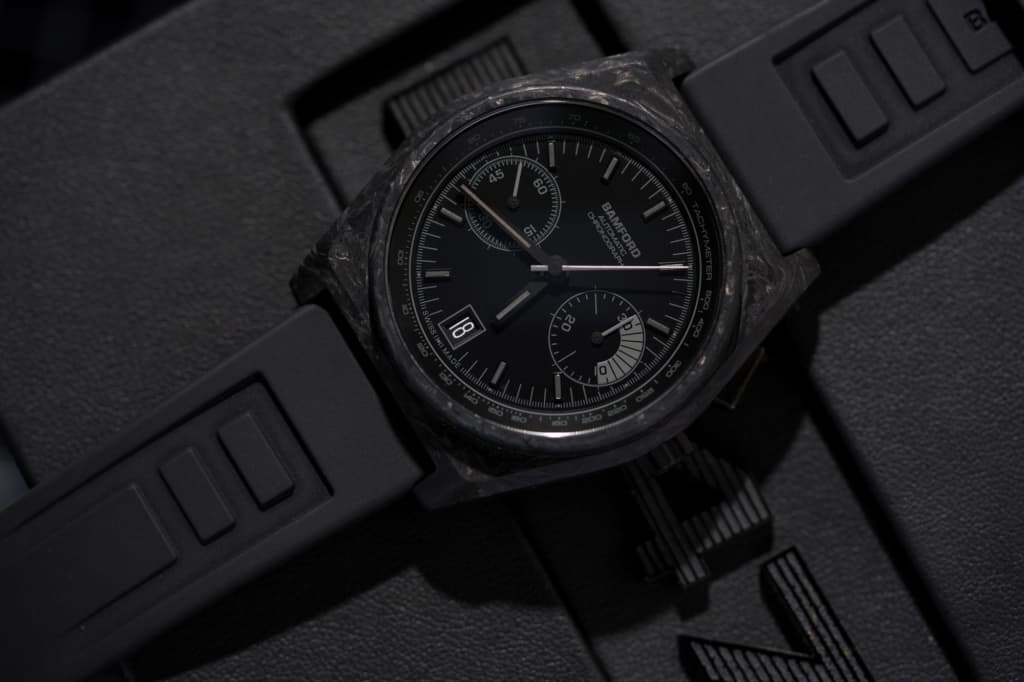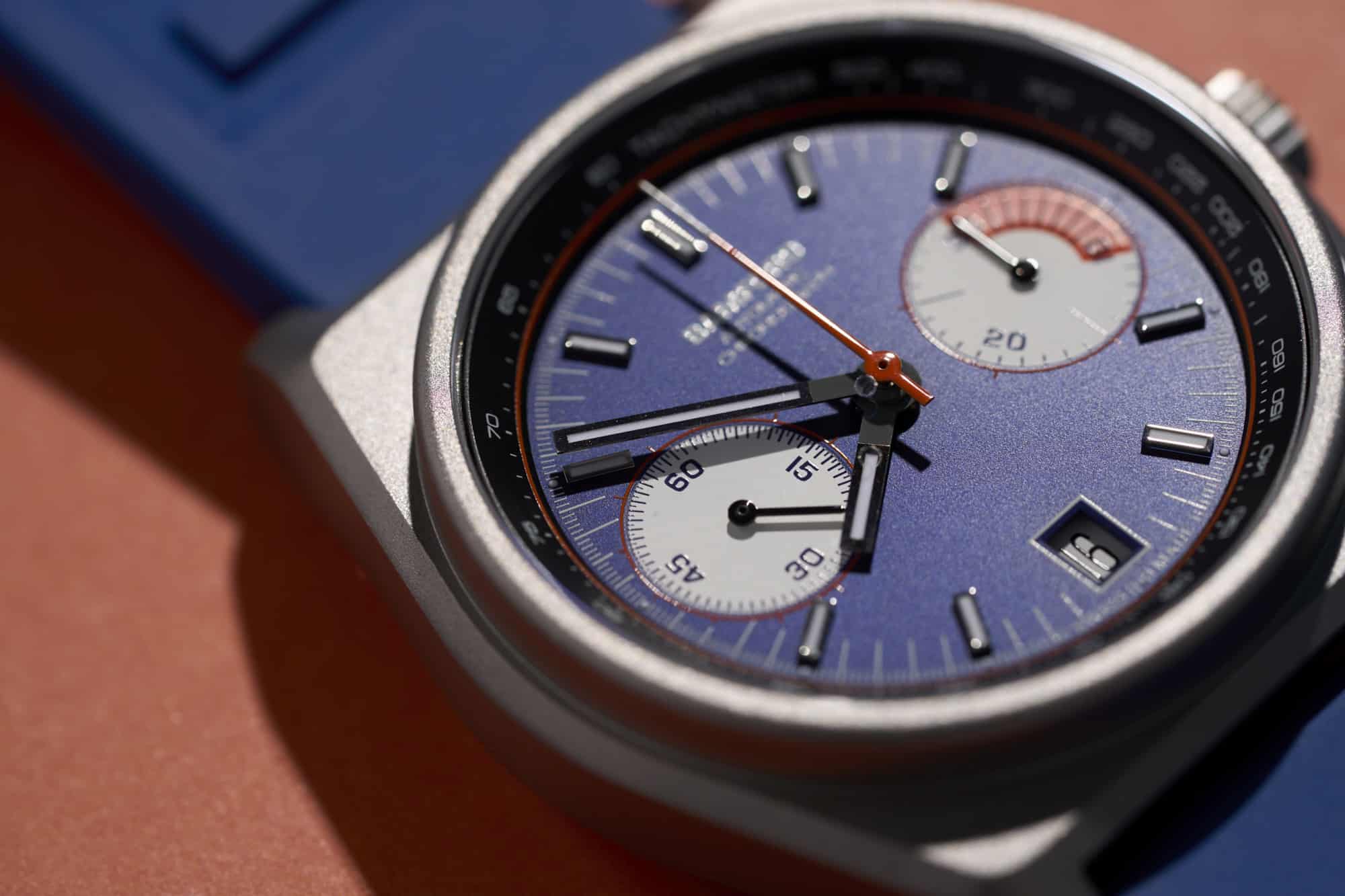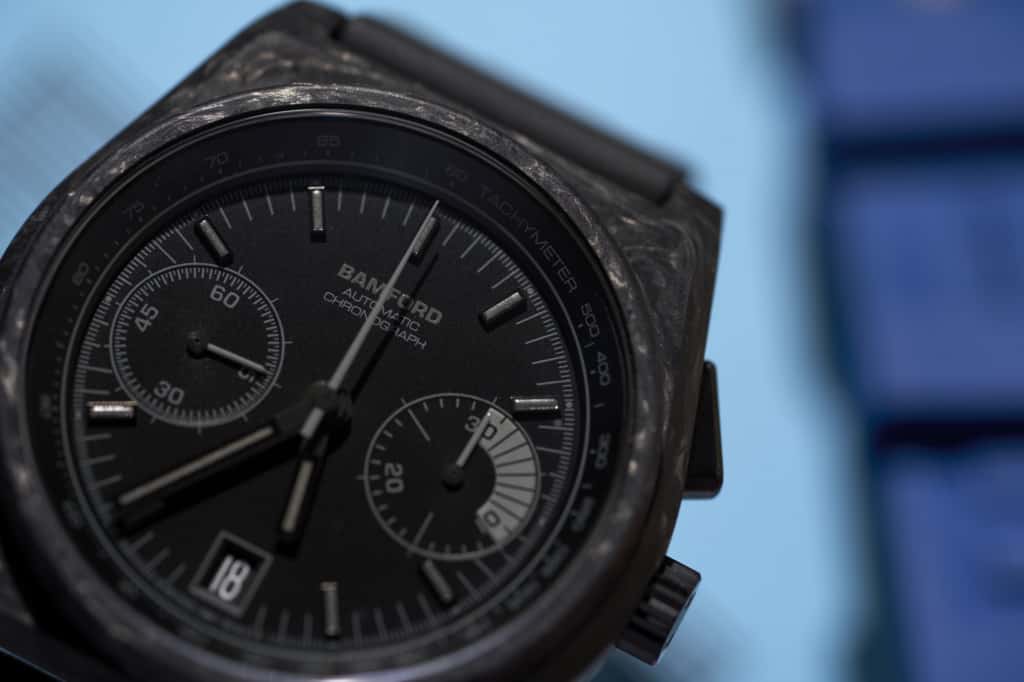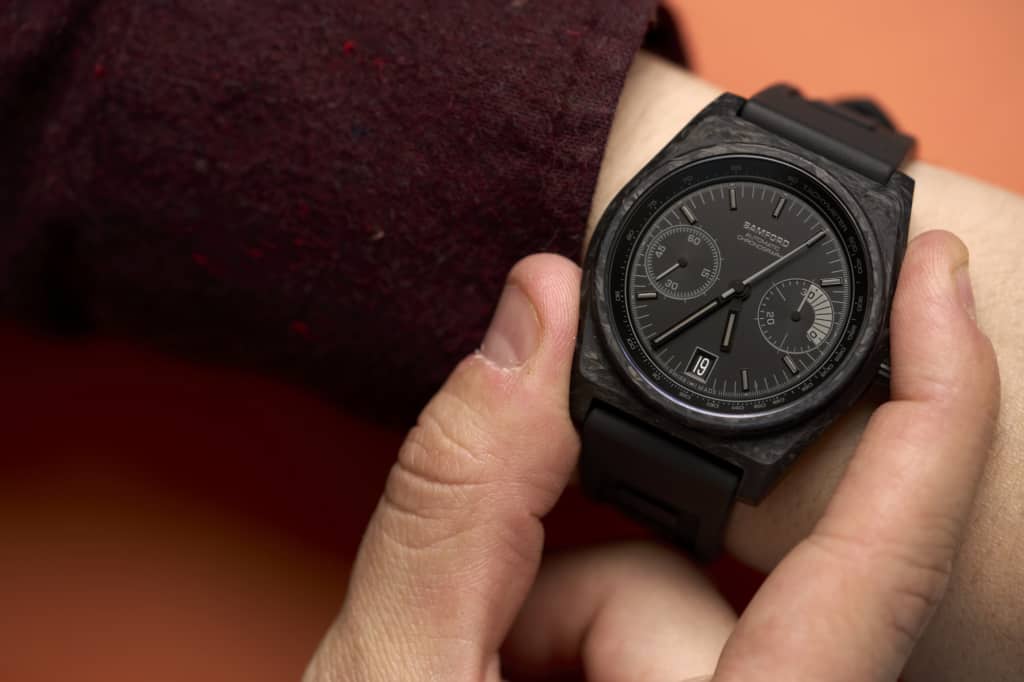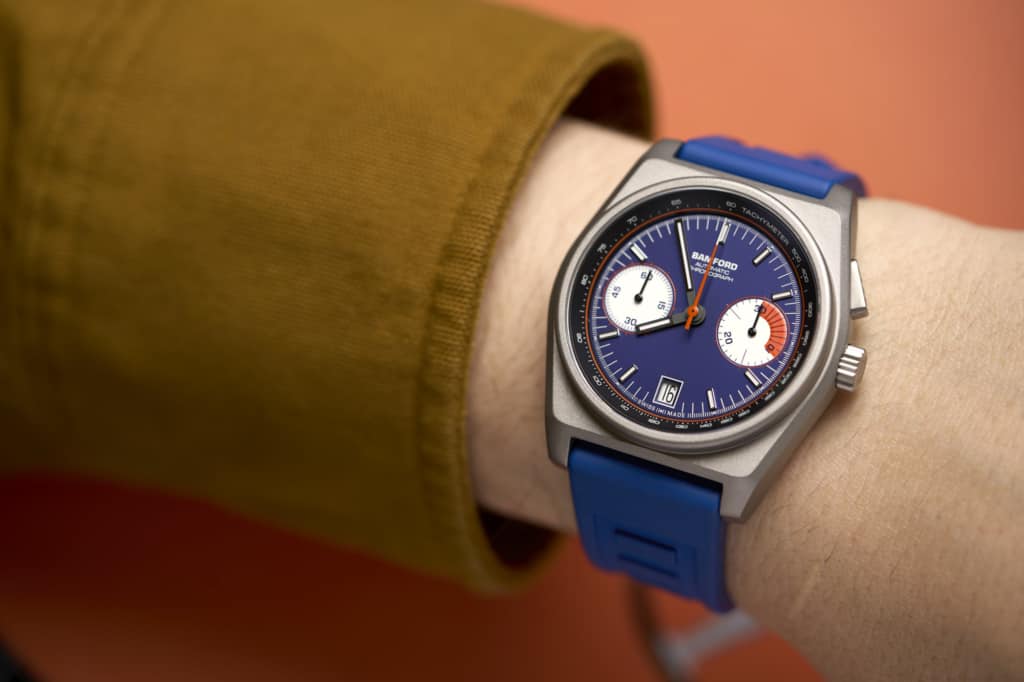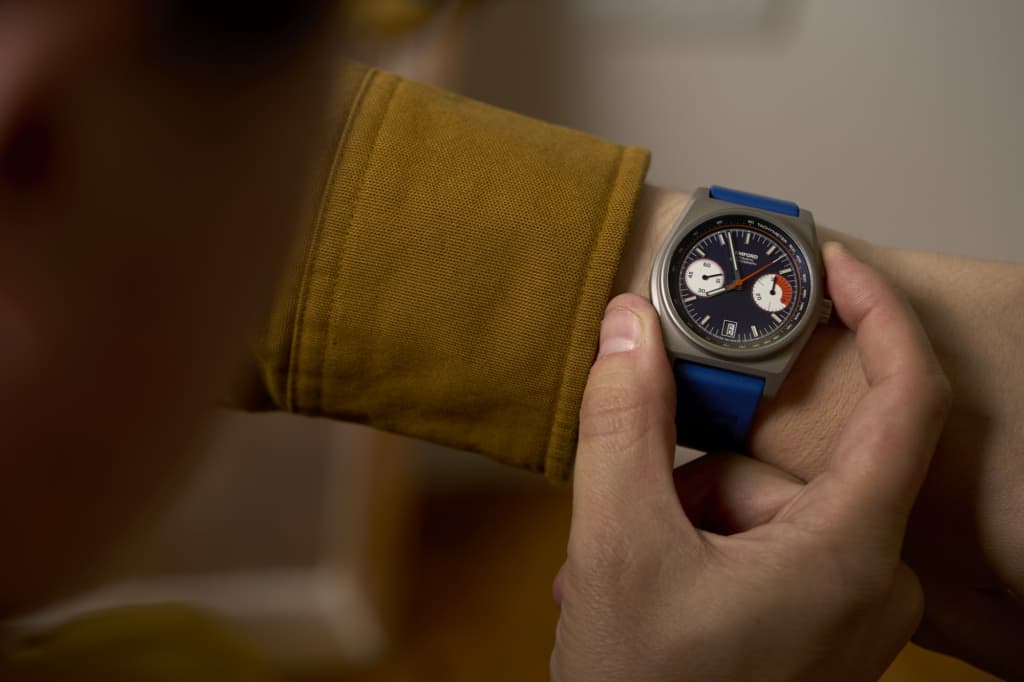While Bamford might be known for modding luxury watches and high-profile collaborations, today we’re looking at a line of watches created by the brand that has somehow gone largely under the radar. Perhaps overshadowed by their flashy creations with Bulgari, Frank Muller, TAG Heuer, and recently Bremont, their house lines are curious creations as well. For several years, they’ve made the Mayfairs, a line of Benrus-esque sports watches in metal, plastic, and every color under the sun. Then they created the simply titled “GMT,” an internal bezel traveling watch in a cushion case design that is likely very familiar. Finally, in 2021 they released the Bamford B347 Monopusher Chronographs, which really upped the ante for their house-branded creations.
Now, I’ll admit, I kind of missed it when these were first released. Despite being monopushers with aggressive 80’s styling, which is very up my alley conceptually, they somehow didn’t sink their teeth into my psyche. Well, not until a few months ago when Bamford released a second version of the B347 with a titanium case. Oddly enough, the first series was made out of the decidedly more esoteric forged carbon. A material that seems to vacillate in the zeitgeist from fancy plastic to a precious exotic substance depending on which brand uses it and what they are charging, it universally does one thing quite poorly, show up in photos. Mostly matte, dark, and muted, it can look very flat when doomscrolling Instagram for watch shots.
So, I think I sort of literally did not notice the B347 until they rinsed and repeated in titanium. But, once they did, I couldn’t shake it. The aggressive lines of the case, simple but retro dial, and that single, wide flat pusher made it stand out of a crowd where vintage-inspired chronographs are hardly rare. Additionally, the price seemed fairly reasonable for a Swiss-made monopusher at $2,950. I reached out to George Bamford who was nice enough to send both a titanium and forged carbon version over for a test drive, so let’s get to it.









 Featured Videos
Featured Videos




